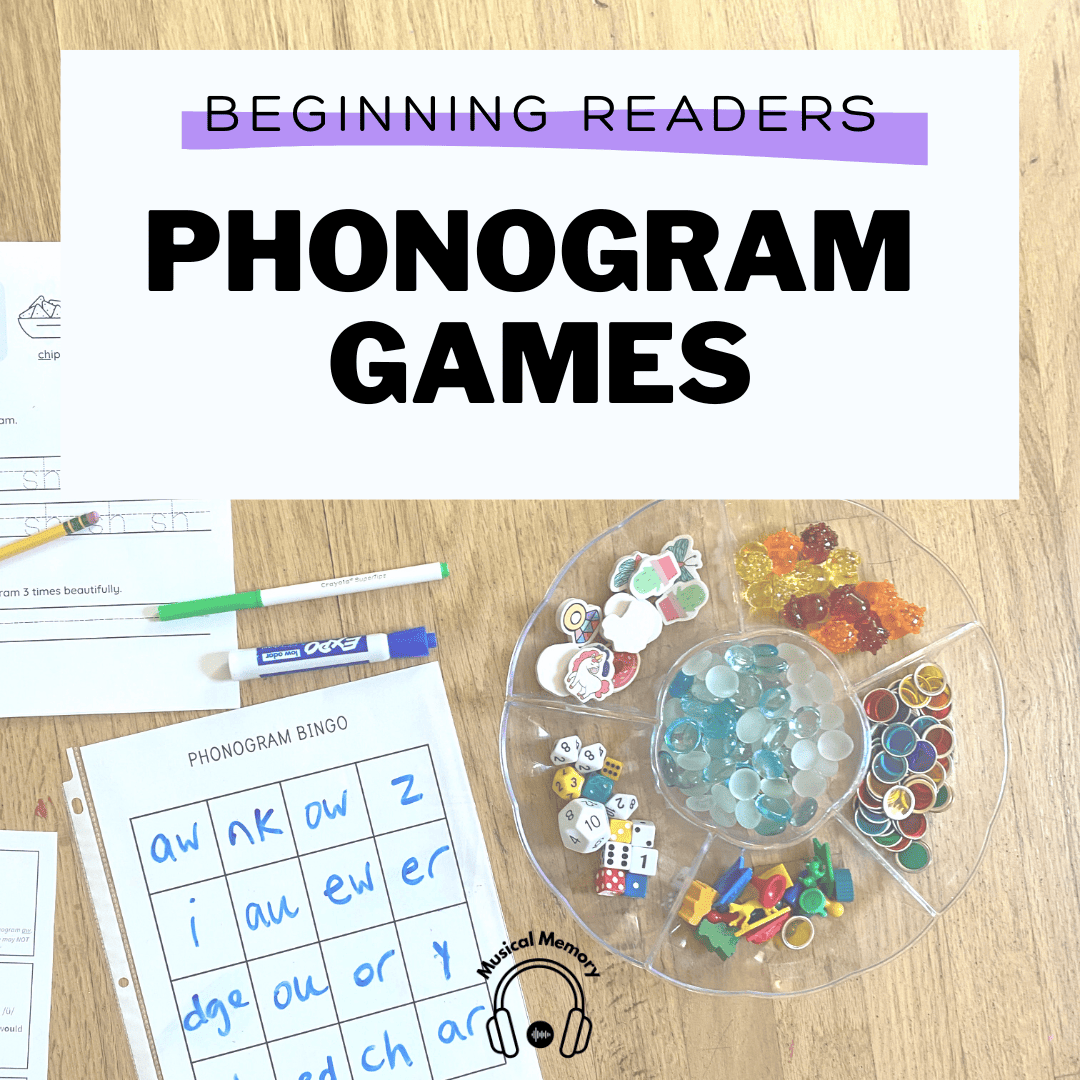Phonogram Bingo
Fill out any size grid with a mix of phonograms that your child has mastered and is currently learning. You can repeat phonograms on the chart. Grab goldfish, m & ms, pennies, or any other small item that can be used to cover the squares. Say a phonogram that’s on the chart and let the child find it and cover it. When it’s time to empty the chart, the child can take the items off one square at a time and say the phonogram that he sees. I like to use something edible so that if they say it correctly, they get to eat it. If not, they put it back and try again.

Phonogram Tic Tac Toe
Draw a tic tac toe board on a piece of paper. Fill in the squares with 9 phonograms your child is working on. Grab tokens, game pieces, or just use a pencil to draw X’s and O’s. You can pop the tic tac toe board in a page protector or dry erase sleeve if you want to play multiple times. On your turn, say the phonogram sound before marking it.
Memory Match
Cut index cards in half to create 2 of each phonogram your child is practicing or reviewing. Write in pencil so that you can’t see through while playing. Play Memory Match together, saying the sounds as you turn them over each time. Keep these in a baggie that’s accessible so the child can play independently if he wants.
Sticky Note Match Up
Place the phonograms the child is practicing or reviewing in a row on the floor, wall, fridge, or white board. Then, write each phonogram on one post it note and put the post it notes around the house/ yard/ room… wherever you are playing the game. As the child finds the post-it, he should bring it to place it by its matching phonogram card & say the sounds aloud. If he misses sounds, hide the post-it again.
Phonogram Hop or Walk
Spread out your phonogram flashcards in a line or circle. Have the child walk or hop from one to the next. Have him say the sounds as he hops on the cards. If a phonogram has 1 sound, it’s 1 hop. 2 sounds = 2 hops. 3 sounds = 3 hops, etc.
Or, the child could pick up the cards as he walks and gets to put them in a pouch or envelope if he says it correctly. He has to place the cards back on the floor if he gets them wrong & can retry again after the first time through. Count the cards at the end to see how many he got right!
Phonogram Puppet
By the time my 4th child was preschool age, I was so relaxed about his natural learning! Preschool is such a sweet, short time and I was determined to soak it up. We were pretty informal, but whenever he did want to “do school with mom,” we’d get out the puppy puppet that I’d ordered just for preschool. Everyone knew Polly (his name choice) only came out during preschool time.
Practicing phonograms with a puppet is easy and you can do it however you want. The parent can hold the puppet and have the puppet say the phonograms from flashcards and the child repeat them. Or the child can hold the puppet. You might say, “See if Polly knows her phonograms as well as you do.” And then let the child make the puppet say them.
Our puppet is under $15 on Amazon.

Phonogram Dice Circle
Lay some phonogram cards that your child is practicing in a circle. You can use however many you want. Have your child stand on the outside of the circle and roll a dice. (We like giant dice!) Walk around the circle, counting the cards as you walk. Say the one that he lands on and roll again. If you rolled a 3, walk 3 cards and say the card you stop on.

If you want to know exactly how to use the phonograms to teach reading…
I created a phonogram kit that you can download and print right away! It has:
- More game ideas
- Printable flashcards (double sided with sounds & spelling rules on the back) – recommend printing on cardstock
- Handwriting worksheets for different levels
- Phonogram teaching tips
- Super cute phonogram tracking charts – one for a younger child learning the first 26 phonogram sounds for the letters of the alphabet; one for older kids who are learning the 75 most common sounds.
I also taught a video based workshop that explains:
- How to tell if your child is ready to read
- What to do when they are ready to read
- How to teach beginning readers in a gentle, but effective way at home!
- How to troubleshoot reading difficulties
- And more!

